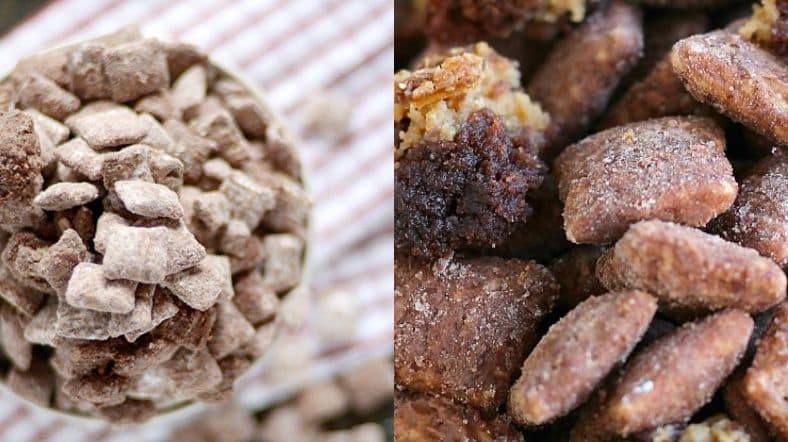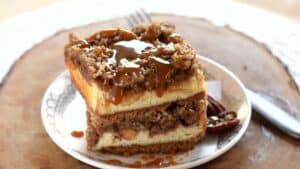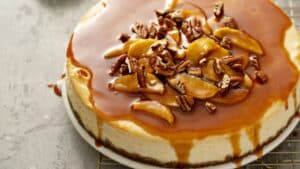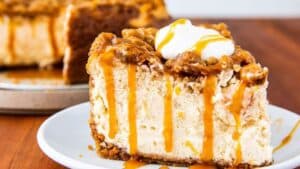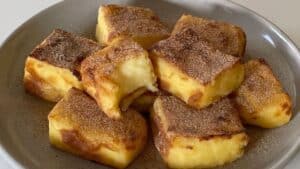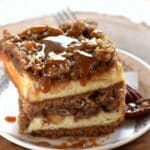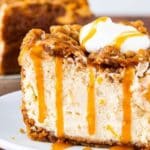Let’s be real. Nobody needs Brownie Puppy Chow. But once you’ve had a handful hell, even a few pieces it owns you. You’ll find yourself thinking about it in board meetings, while folding laundry, during awkward family dinners. It’s that kind of snack. It does not ask for permission.
This isn’t your toddler’s sugar bomb, though. We’re diving deep here technique, ratios, fat absorption, starch structure, and how to strike that violent balance between crispy cereal and brownie-like chew. Professionals, this one’s for you.
Let’s melt some chocolate and get our hands dirty.
What Even Is Brownie Puppy Chow?

First, we should get this out of the way. It has nothing to do with dogs. It’s not for them. Don’t give it to dogs. Chocolate, you know the deal toxic.
“Puppy chow” is Midwest slang for that dangerously addictive mix of Chex cereal, melted chocolate, peanut butter, and a hailstorm of powdered sugar. Brownie Puppy Chow? It takes the original blueprint and cranks the fudge dial to 11.
Imagine this: Crisp cereal shells, drenched in a sticky river of cocoa-heavy chocolate. Then blasted with powdered sugar and brownie mix until they resemble something smuggled outta Willy Wonka’s basement.
Why the Brownie Twist Matters
Okay, but why mess with a classic?
Simple. Texture. Depth. And craveability. The kind that makes a chef sneak back into the walk-in for just a bit more.
By incorporating actual brownie mix dry or baked, depending on your process you create layers of flavor. Chocolate-on-chocolate. Cocoa fat mingling with cereal starch. It’s a Maillard fever dream.
Plus, there’s this nostalgia factor. Brownies are baked into people’s memories first bake sale, grandma’s foil-covered tray, sad cafeteria squares. You fuse that with the tactile joy of puppy chow and you’ve basically hacked childhood.
The Science of the Crunch
Let’s get nerdy. If you’re a pro, or even just a detail freak, this stuff matters.
The foundation is the cereal. Usually Rice Chex or Corn Chex, but here’s a trick: Use a 60/40 blend. Corn for crunch, rice for structure. Or go rogue with Crispix for that dual-grain flex.
Now, heat. You’re melting fats and sugars together typically semi-sweet chocolate, creamy peanut butter, and sometimes a knob of butter. That butter’s not just for mouthfeel. It helps reduce viscosity. Makes the coating hug the cereal better, less pooling, less soggy bottoming-out.
You want the coating just thin enough to distribute but thick enough to grab every crack and cavity. No one wants a naked square in the batch. That’s betrayal.
Once coated, the brownie mix comes in. Here’s where it gets nuanced.
Raw Brownie Mix vs Baked Crumble
Some folks just toss in boxed dry brownie mix with the powdered sugar. That’s fine. It’s quick, dirty, satisfying. But pros? We can do better.
Try this: Bake a tray of dense, underdone brownies. Cool ‘em. Then dehydrate yes, in a low oven or dehydrator. Crumble the dried brownie into a coarse powder. Mix that into your sugar coat. The flavor complexity is nuts. There’s caramelization, real cocoa depth, toasted notes. Boxed mix can’t hold a candle.
One pastry chef I worked with mixed cocoa nibs and malt powder into the brownie sugar blend. I still think about that batch sometimes.
Ratios That Actually Work
Let’s break it down, pro-style. Scaled for a catering tray or large-batch prep:
- 9 cups Chex cereal (5 corn, 4 rice)
- 1 ½ cups semi-sweet chocolate chips
- ¾ cup smooth peanut butter
- ¼ cup unsalted butter
- ½ tsp kosher salt (balance is everything)
- 2 cups powdered sugar
- ¾ cup brownie mix (or 1 cup dehydrated brownie crumble)
Melt the chocolate, butter, and peanut butter in a bain-marie. Stir in the salt. Once glossy and pourable, fold into cereal gently. Not aggressively you’ll crush the cereal and kill the crunch. Cool slightly before tossing in the sugar/brownie blend. Don’t skip that cool-down. Hot chocolate plus powdered sugar? You get sludge.
Storage and Shelf Life
So many people screw this up.
Once coated and cooled, store your chow in an airtight container with a small sachet of silica gel if you’ve got it. Humidity is the enemy. This mix pulls moisture like crazy especially if you used real brownies.
Shelf life? About 5 days before the crunch starts to go. You can stretch it to a week if you keep it dry and cold, but flavor degrades.
Freezing? Yes. But be warned the sugar will bloom and the texture dulls slightly. Still edible. Still dangerous. Just not optimal.
Emerging Trends: Chef-Tweaked Puppy Chow

Brownie Puppy Chow is hitting menus, weirdly. High-end chefs are reclaiming junk food. They’re adding it to dessert boards, crumbling it onto plated mousse, using it as a topping for gelato.
Saw it once as a base for a mille-feuille. Not sure how I felt about that. But hey, pastry’s anarchy now.
There’s also a savory twist showing up cocoa nibs, smoked salt, even chili oil-infused chocolate. Sounds weird? It works. Especially with bourbon pairings. Think “Mexican mole meets dessert snack.”
And let’s talk infusions. Bartenders are stealing this, making Brownie Chow Milk Punch using the actual mix soaked in whole milk and strained. Fat-washed, dessert-flavored, ridiculously sippable.
Professional Applications
Okay, let’s get serious for a minute.
Why should a caterer, pastry chef, or bakery even bother with something that sounds like it came outta a dorm kitchen?
Because it sells.
Package it in kraft bags. Label it “Brownie Mud Crunch” or “Decadent Cocoa Bites.” Add buzzwords like “small batch,” “double chocolate,” “hand-coated.” Boom. $6.50 a bag.
Use it for:
- Wedding favors
- Cafe impulse buys
- Ice cream shop toppings
- Holiday sampler boxes
- Cocktail bar garnishes
You’re taking a low-cost, high-yield product and positioning it as artisanal. Margin city.
Also: it’s gluten-free if you use the right cereal and brownie mix. That matters to customers.
Common Mistakes That Ruin Everything
- Using too much chocolate. Sounds crazy, but it drowns the texture. Cereal turns to mush.
- Skipping the salt. Chocolate without salt is like a concert without bass. Flat.
- Hot-coating the sugar. You end up with sticky clumps. Let the mix cool first.
- Not sifting the brownie mix. Clumps will cling. You want feather-light dusting.
- Storing while still warm. That’s a condensation deathtrap.
Don’t be that chef who blames the recipe. Respect the process.
Pro Tips for Elevating the Flavor
- Add espresso powder to the melted chocolate for depth.
- Spike the peanut butter with a dash of bourbon or vanilla bean paste.
- Use black cocoa powder in the brownie mix for Oreo-level intensity.
- Throw in mini chocolate chips post-coating for texture contrast.
- Drizzle with tempered chocolate for sheen and structure.
Play, experiment. But keep one thing sacred: the crunch.
Final Bites
Brownie Puppy Chow walks this fine, reckless line between nostalgic joy and modern indulgence. It’s messy. It’s dramatic. It’s candy in cereal drag. But in the hands of a pro? It’s a canvas.
You can flavor it, sculpt it, serve it however you damn well please. And it sells. Fast.
So next time you need a crowd-pleaser or want a new signature treat, don’t sleep on this one. Throw on an apron, melt that chocolate, and make some culinary mischief. The kind with crunch.
And if a few handfuls disappear before service… who’s really gonna blame you?
Key Takeaways for Pros:
- Balance your cereal blend: Rice for structure, corn for crunch.
- Use real brownie crumbles for depth dehydrated, if you’re serious.
- Always sift powdered ingredients. No one wants dusty clumps.
- Salt is non-negotiable.
- Package smart. It’s a retail goldmine.
Now go. Break the rules. Coat everything in chocolate. Just don’t forget the damn crunch.
